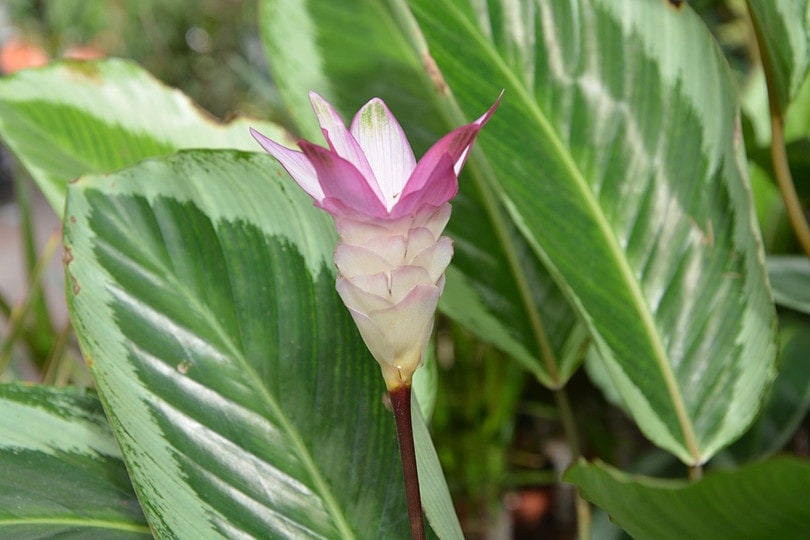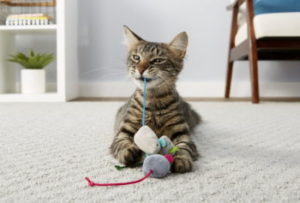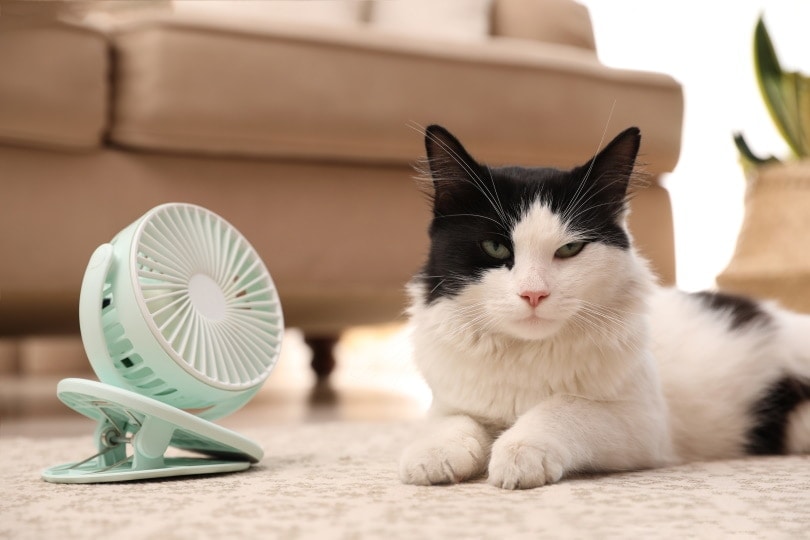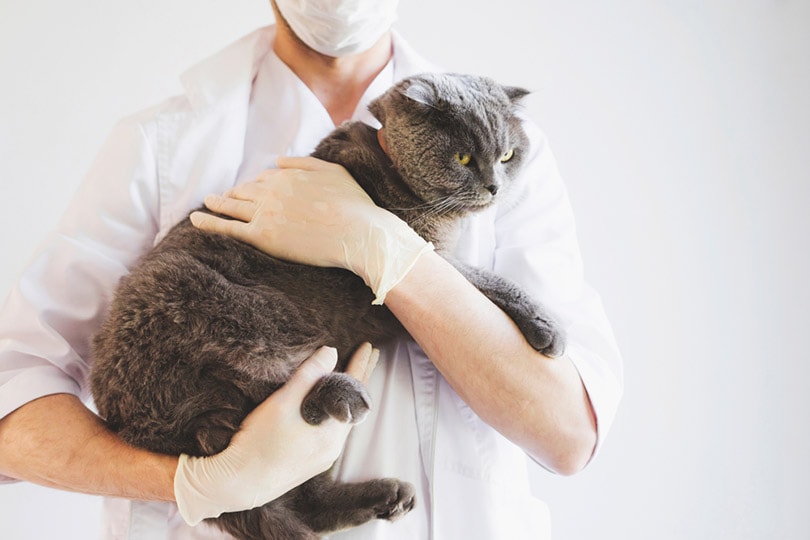Is Calathea Toxic to Cats? Vet-Approved Facts and Safety Guide
Updated on

Calathea plants are common houseplants because they have beautiful leaves and require a relatively low level of care. While they make a lovely and bright addition to your home, are these plants safe for cats?
The good news is that Calathea species are harmless to your cat. However, since cats are curious creatures by nature, you may have found your kitty sniffing around your plants or freshly cut flowers in the home. Even if you put your plants in an area that you think is out of your cat’s reach, they may surprise you by being able to jump and climb their way to them.
Since some plants are toxic to cats and some aren’t, it’s always important to check and make sure that the plants you bring into your home are safe for them. Let’s learn more about Calathea plants and other safe plants for your cat.
What Is Calathea?
Calathea plants are popular choices for indoor decorating. They’re often used in homes and office buildings. They are easy to care for and have wide, bright green leaves. Calathea is a genus of flowering plants in the family Marantaceae. There are about 60 species of Calathea plants.
The leaves of some species can be patterned with bright colors like pink, orange, white, and red. The undersides of the leaves are usually purple. These leaves fold up at night and open again each morning. The plants bring tropical vibes to indoor spaces and liven up any living area.

Will Calathea Harm My Cat?
No part of the Calathea plant is harmful or poisonous to cats. It’s not toxic to dogs either, making it a safe option if you have a multi-pet household.
Some houseplants are toxic and contain compounds that can cause mouth irritation, illness, or organ failure in cats and other animals. Calathea plants contain none of these compounds and are perfectly safe even if your curious kitty happens to swallow a bit of a leaf or stem.
If your cat loves to chew houseplants, Calatheas are perfectly safe.
When Are Calatheas Unsafe?
A Calathea plant is not poisonous or toxic to your cat, so you shouldn’t have to worry about them getting severely ill from eating some of it. However, eating large amounts of the leaves may cause signs of gastrointestinal upset. Some signs of this include vomiting, nausea, and diarrhea. You may notice bits of the leaves in your cat’s vomit.
If your cat stops eating, feels unwell, or the signs go on for more than a few hours, contact your veterinarian.

Why Do Cats Chew Plants?
There are several reasons why your cat loves to chew plants. Here are a few possibilities when it comes to your feline:
- To alleviate boredom
- They like the texture of the leaves
- They’re playing
- They instinctively want to occasionally eat plants as they would in the wild
Many cats just like the way plants feel as they chew them. Since cats seem drawn to chewing plants, it’s especially important to make sure the plants in your house are non-toxic to them.
What To Do About Your Cat and Calatheas
Even though Calathea plants are safe for cats, it doesn’t mean they should be allowed to eat them as much as they want to. It means that if your cat should happen to get into a Calathea plant, there is no reason to panic.
Some cats can cause a great deal of harm to your plants if left alone with them. In some cases, your plants can be killed. Cats can chew and pull all the leaves off, damage the roots, dig up the plant completely, and destroy your Calathea to the point of no return. They can also repeatedly make a mess in your home by getting into your plants.
Keeping Your Cat Away From Calatheas
You can train your cat to leave your Calatheas and other plants alone by implementing some of the following methods:
- Use positive reinforcement methods. This consists of giving your cat a reward when the desired behavior happens. Doing this will increase the likelihood of that behavior occurring again.
- Redirect their interest. Spray the outer area and pot of your plant with a citrus spray meant to repel cats. Many cats don’t like the smell or taste of this spray and will steer clear on their own without you having to do anything else.
- Use heavy stones. If your cat likes to dig or knock your plants over, fill the base of the pot with heavy stones or bricks to make it impossible to move. If your cat can’t succeed at their quest, they will give up trying.
- Give them their own plants. Sometimes, cats just want to chew leaves. You can offer your cat their own safe assortment of plants to chew so they leave yours alone. Cat grass and catnip are popular and safe choices to keep your cat happy.

Cat-Friendly Houseplants
The plants on this list are safe for cats. If you’re ever unsure of any plant, research whether or not it’s safe for your cat before bringing it into your home.
- Areca Palm (Dypsis lutescens)
- African Violet (Saintpaulia species)
- Swedish Ivy (Plectranthus australis)
- Boston Fern (Nephrolepis exalta bostoniensis)
- Spider Plant (Chlorophytum comosum)
- Christmas Cactus (Schlumbergera bridgesii)
- Haworthia species
- Lipstick Plant (Aeschynanthus humilis)
- Hibiscus (Hibiscus syriacus)
- Polka Dot Plant (Hypoestes phyllostachya)
- American Rubber Plant (Peperomia obtusifolia)
Final Thoughts
Curious cats seem to always get into things that we don’t want them to. Houseplants are no exception. If you own Calathea plants, you don’t have to worry about them presenting any danger to your cat. However, if your cat consumes too much of the plant, it might make them sick once. If your cat is destructive to your plants, it’s best to try some ways to keep them away from the area and get them interested in other activities instead.
We hope we were able to ease your mind when it comes to sharing your home with cats, Calatheas, and other houseplants on this list that are cat-friendly.
See also:
- Are Snake Plants Toxic to Cats? Vet-Approved Safety Guide
- Can Cats Eat Succulents? Vet-Reviewed Facts & FAQ
Featured Image Credit: JACLOU-DL, Pixabay














